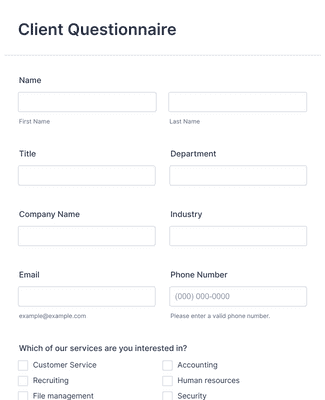Collect new leads, process orders, register new members, receive donations, record incidents, and so much more. Create web forms for free and embed them in your website in seconds with our drag-and-drop web form builder!
템플릿
Don’t want to build your web form from scratch? Just select one of our readymade web form templates and customize it for your business — it’ll only take a few minutes!






혜택
Whether you’re collecting donations, selling products online, or charging booking fees, get paid fast with our 30+ payment integrations. Jform never charges extra transaction fees, so you just have to pay your chosen platform’s usual rate.
With our intuitive Form Builder, it’s easy to create online web forms that look exactly how you want. Just drag and drop form fields, visual elements, widgets, and app integrations directly onto your form — no coding required.
Make your web form fit right into your workflow. Power up your form with advanced features that let you collect the data you need, from files to e-signatures. Send submissions to your favorite apps instantly with our 100+ apps and integrations, or turn them into PDFs automatically.
사용후기

Your search "[searchValue]" did not match any results.
Web forms are digital versions of paper forms that allow users to enter information electronically. These forms are accessible on both mobile devices and desktop computers, offering a faster, more flexible way to collect information than traditional paper forms.
There are thousands of different types of web forms, from order forms to signup forms and everything in between.
Online form building software allows you to build your own form from scratch to ensure it fits your exact needs. These tools also often provide templates for different types of web forms. Templates save you time and effort by allowing you to skip the design step.
Regardless of which method you choose, there are a number of tools available to help you build the form you need.
You can create web forms using a variety of online form builders, like Jotform. Look for a form builder that offers the best features and value for your unique requirements.
Whichever option you choose, check to see what it offers beyond form building. For example, on top of its drag-and-drop form builder, Jform gives users the ability to automate approvals, collect e-signatures and online payments, and manage form data.
Accessibility is an important element to consider when designing your web forms. Accessibility features help ensure that all users can navigate your form and actively participate in the digital world, regardless of any disabilities they might have. By making your forms more accessible, you not only improve the user experience for people with disabilities, but you can also get more form submissions — from a greater variety of perspectives.
Here are some ways to improve accessibility in your web forms:
With these small changes, you’ll make your form more accessible for everyone. This shows a commitment to complying with accessibility regulations and to meeting customers’ needs.
Getting your users to start filling out a form is much easier than getting them to finish it. A poor user experience may lead to significantly fewer form submissions. Making your form easy to use, engaging, and dynamic will help prevent user drop-off and increase conversion.
Here are some tips to help you enhance your user experience:
Making your forms approachable and easy to fill out makes it more likely that your users will complete them accurately. More responses provide your organization with better, more reliable information — and more leads.
Web forms are useful for a variety of situations. Any organization or individual looking to collect information from their target audience will use a web form in some capacity.
Here are some of the most common use cases:
While these are some of the most popular use cases, there’s no limit to the possible uses for web forms. With the right form builder on your side, you’ll have the power to create a form to fit your every need.